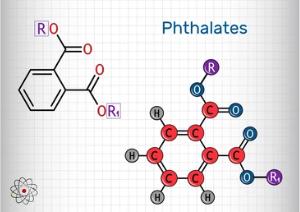
Plasticizers are phthalic acid esters (PAEs), polymer material additives that are widely used in food contact materials, cosmetics, toys, etc. Plasticizer is the formation of phthalic acid, about 30 kinds of esters collectively, its low volatility, high stability, and easily soluble in organic solvents. Plasticizers are endocrine-disrupting chemicals which can lead to male feminization, shrinkage of the genitals, weaken male fertility, cause premature sexual maturity in women, and increase the chances of breast cancer in women. Brewing materials contain a small amount of PAEs, including dibutyl phthalate (DBP) 0.344 mg/kg, in the premise of not contacting plastic products in the brewing process of white wine plasticizer mainly from raw materials. With the exposure of the "plasticizer incident" in the wine industry, people began to pay attention to the safety of wine plasticizers.
PAEs are easily soluble in ethanol and have good solubility in wine, making them a common contaminant. PAEs are one of the essential hygiene indicators for wine. As one of the world's leading wine hygiene testing service providers, Lifeasible offers professional plasticizer testing solutions to detect PAEs in wine. Our labs will conduct tests in strict accordance with international standards and provide reliable analytical results. The PAEs we can test for are listed below:
| Dimethyl phthalate (DMP) | Diethyl phthalate (DEP) | Dipropyl phthalate (DPP) | Diisobutyl phthalate (DIBP) |
| Di-n-butyl phthalate (DBP) | Butyl benzyl phthalate (BBZP) | Dicyclohexyl phthalate (DCHP) | Di-n-hexylphthalate (DHP) |
| Di-2-ethylhexylphthalate (DEHP) | Di-n-octyl phthalate (DOP) | Diisononyl phthalate (DiNP) | Diisodecylphthalate (DIDP) |
| Di-2-ethylhexyl phthalate (DEHA) | Di-2-ethyl ethyl phthalate (DiNA) | - | - |
We offer proven standard methods and other methods for plasticizer testing in wine for our customers to choose from. Our solutions can meet the need for fast, simple, and accurate determination of PAEs in wine in large quantities.
Wine contains a large amount of ethanol and water, which can shorten the life of the mass spectrometry ion source filament and cause damage to the non-polar column. In contrast, the multiple complex components in wine cause greater interference with the determination. We offer a variety of pretreatment methods for testing PAEs in wine to improve the sensitivity and reliability of the analysis.
Our solutions for plasticizer testing in wine have excellent reproducibility and accuracy for different types of wines, and the results are fully compliant with the standards. Some of our methods are easy to use, fast and efficient, with high accuracy, making them a reliable choice. If you are interested in our solutions, please contact us for technical consultation and quotation.
Lifeasible has established a one-stop service platform for plants. In addition to obtaining customized solutions for plant genetic engineering, customers can also conduct follow-up analysis and research on plants through our analysis platform. The analytical services we provide include but are not limited to the following:
STU-CRISPR System Improves Plant Genome Editing Efficiency
April 19, 2024
Application of Exosomes in Facial Beauty
April 12, 2024